

PLAY WITH NATURE
Discovering the natural environment through play

MAKING SPACE FOR PLAY: Volume Four

WEST CHESTER, PA

WHO WE ARE
STUDIO LUDO is a 501(c)3 woman led non-profit founded in 2015 whose mission is building better play through research, advocacy, and design.
We are architects, landscape architects, city planners, and social scientists who have collected user demographics, physical activity, and play behavior data on over 60,000 people in 100 play environments around the world.
This dataset is the most current picture of behavior and user preference in play environments in the world, and directly influences all of our play space designs, from rooftops, to schoolyards, to neighborhood parks, to large scale destination playgrounds.
WHY PLAY
Play is how humans learn about themselves and the world around them.
Playing in nature provides rich sensory experiences that light up our brains, supporting all aspects of development, from mental to physical to social-emotional.
Being outdoors calms our stress response, lowers cortisol, and makes us feel happier and more connected. Nature play is not just for kids. As we age, we still crave movement, laughter, joy, and connection. All of this (and more) can happen through play, but the benefits increase exponentially when that play happens in an immersive outdoor setting.
OUR RESEARCH
We have studied play behavior around the globe, and collected data on over 60,000 people in 100 different play environments, with a focus on the US and the UK. This is the largest data set on play behavior in the world and directly informs all of our play designs.
Our research asks a simple question - what makes a great space to play?
OUR APPROACH
When we started collecting data in playgrounds, we intentionally selected very diverse environments. Structures ranged from post-and-platforms made from steel and plastic, to giant custom treehouses made from reclaimed timber. Surfaces included sand, pea gravel, grass, artificial turf, wood fiber, concrete, asphalt, rubber, and tile.
Some spaces were heavily planted, while others had no nature at all. Public playgrounds were our testing ground to determine how design influenced user preference, play behavior, and physical activity.
WHAT MAKES A GREAT SPACE TO PLAY?

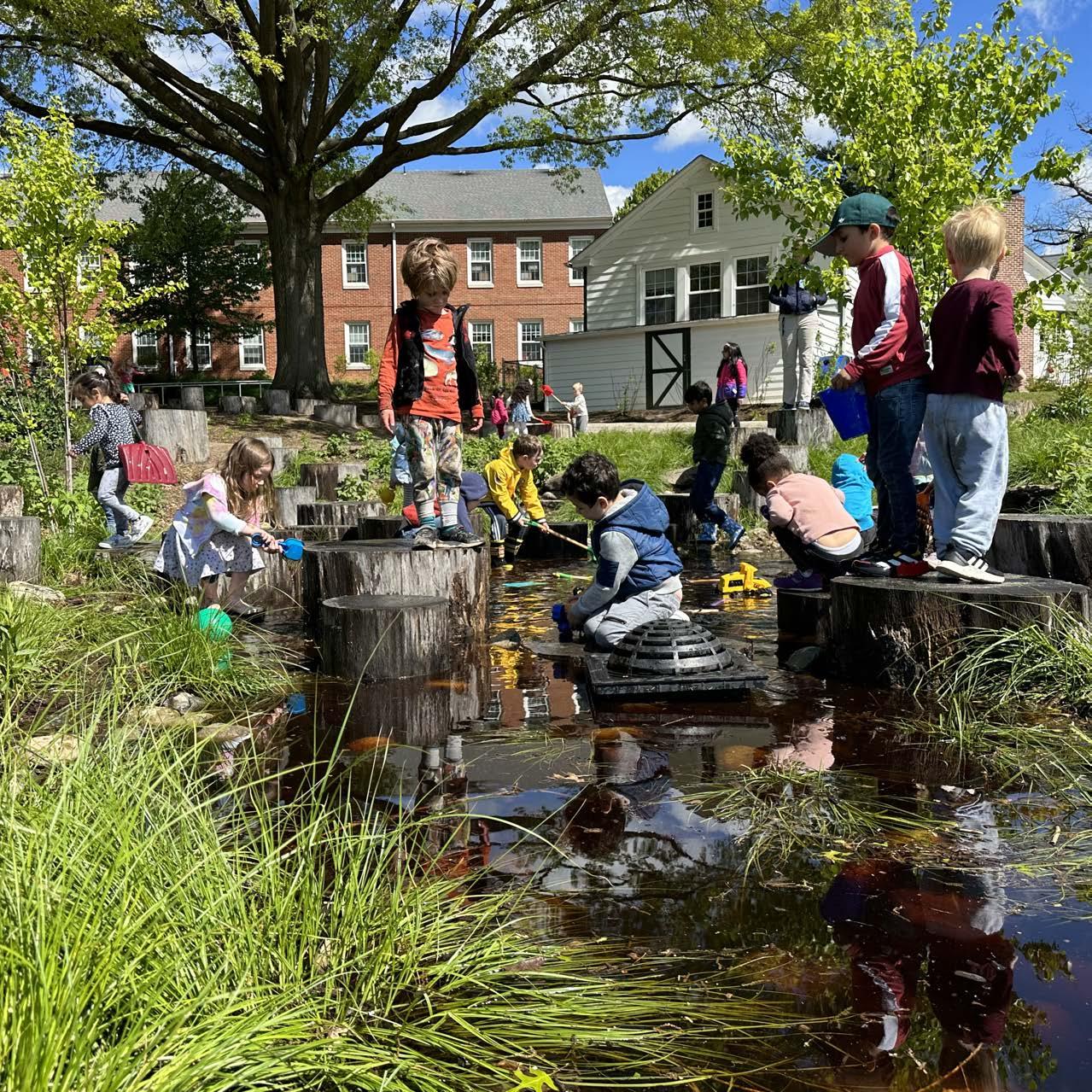
OUR FINDINGS
One of our most striking findings is that nature has more impact on use than any type of play equipment. Playgrounds with mature trees have 2X more people than playgrounds with no trees.
Even small amounts of nature influenced use. We developed an atmosphere scale to measure the impact of nature on behavior, giving each playground a score between 1 and 5: 1 is new trees/immature shrubs; 2 is mature shrubs; 3 is immature trees; 4 is mature trees outside the playground; and 5 is mature trees inside the playground. For every increase on the atmosphere scale, playgrounds saw 26% more use. Mature trees also increased stay time in playgrounds by 19%.
Nature based play not only encourages more use, but it makes us happier and healthier as a community. Our findings show that half of people in playgrounds are not kids, but teens, adults, and seniors. Play is for everyone.
We need play designs that reflect what people want. Our data shows that people prefer playing in nature, with people of all ages.
WHY IT IS IMPORTANT LET’S BRING NATURE BACK
SENSORY
Playing in nature provides a rich experience that activates all of our senses; from seeing, hearing, tasting, smelling, and touching, to the more hidden senses of the vestibular system (sense of balance), proprioception (the position of the body in space), and interoception (internal signals, or how we feel inside our bodies).
TOUCHING
Nature provides a variety of tactile experiences that invite discovery & agency


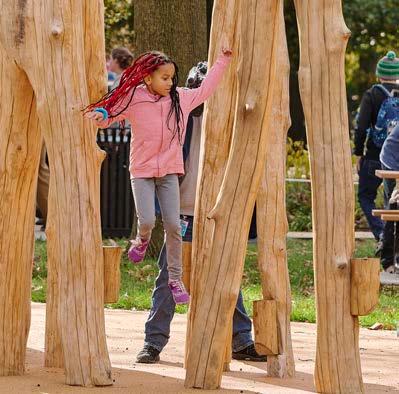
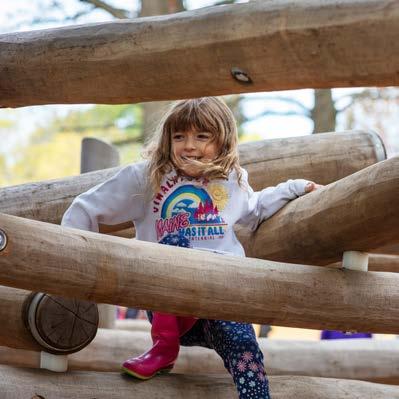
BALANCING/ BODY POSITION
Irregular & varied surfaces foster better balance & increase flexibility
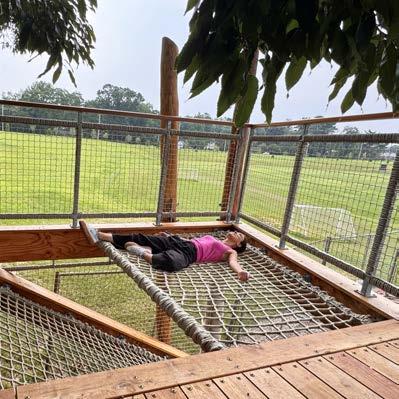
INTERNAL SIGNALS
Naturalized green spaces provide a sense of calm & lower stress response

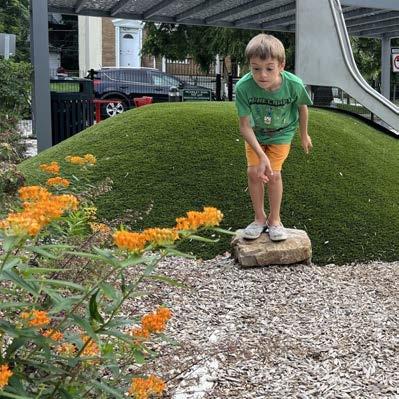
SEEING
Eyes are healthier outdoors, with more opportunities to look both near & far
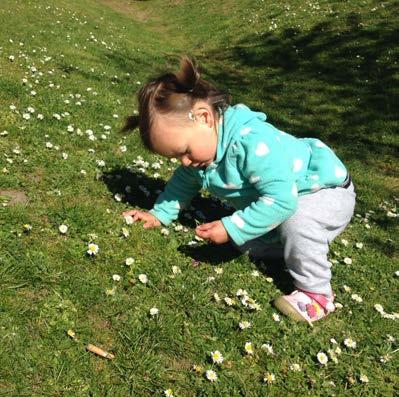
HEARING
Variety of sounds in nature sharpens hearing & builds listening skills



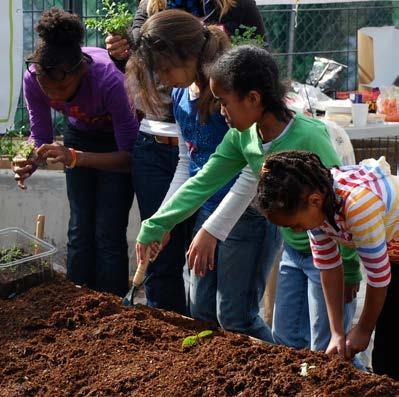
TASTING/ SMELLING
Nature ignites the senses, with a diversity of smells & tastes
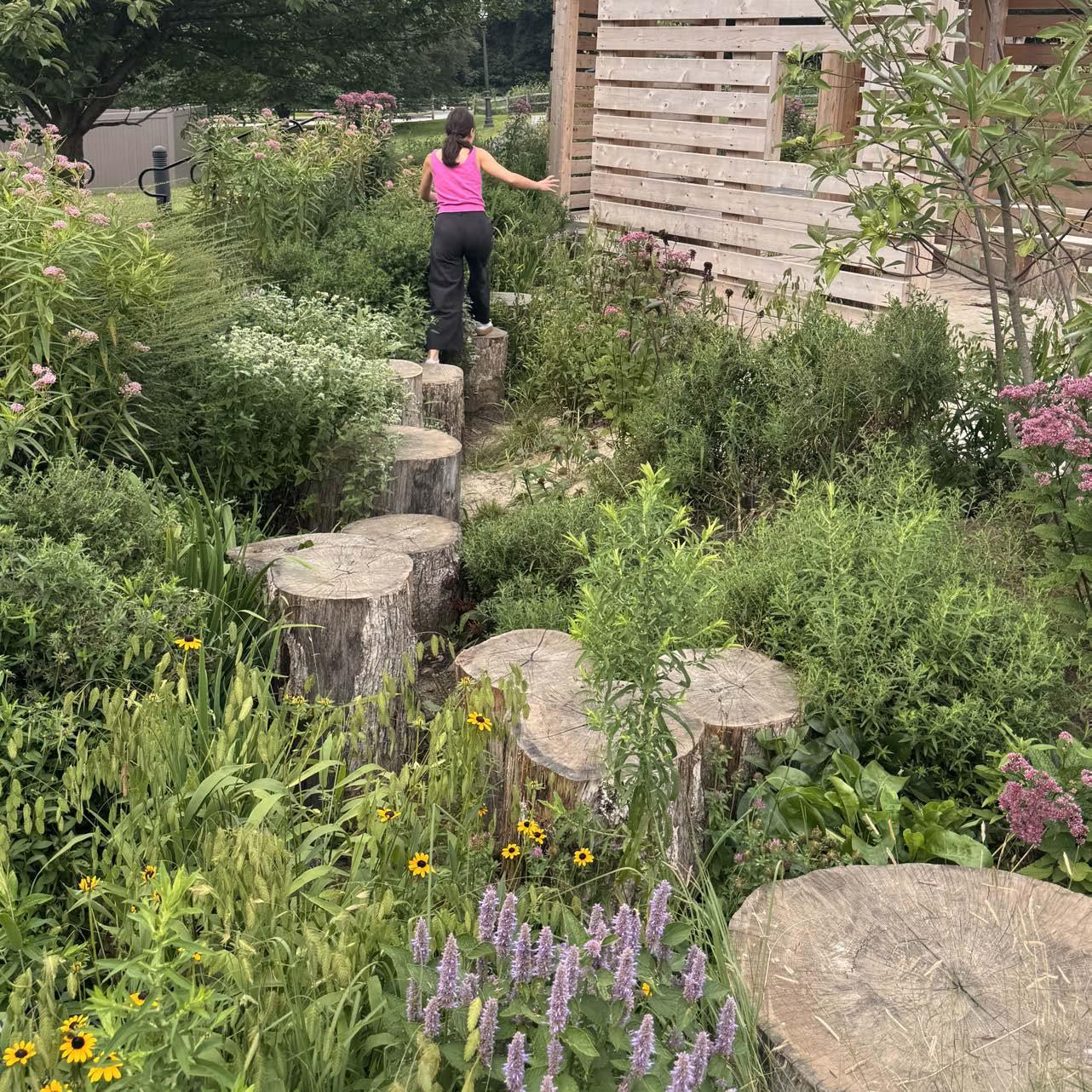
HABITAT
Nature play is good for humans and good for the environment. Planted areas provide food and nesting for local wildlife. Logs can be home to a variety of insects. Small pools and creeks support amphibians and other creatures.
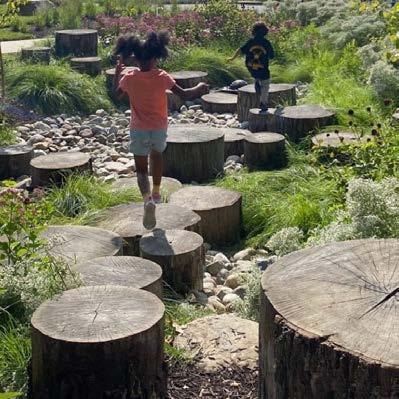
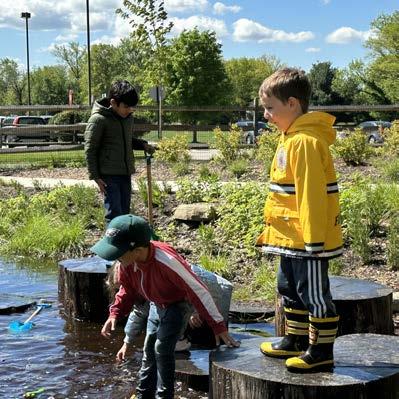
MEADOW
Grasses & flowering perennials support imagination play & pollinators


THICKET
Dense shrubs provide space for getting lost & homes for birds & small mammals
RAIN GARDEN
Vernal pools provide education & crucial habitat for insects, frogs, & salamanders

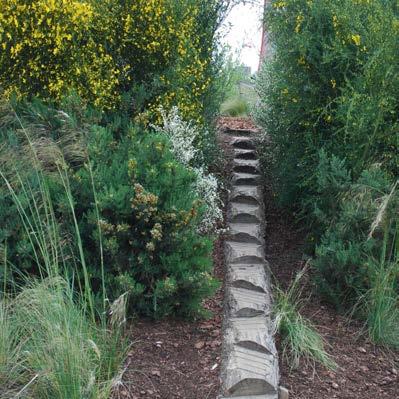
SEEDS & PETALS
Plant parts are great for play & also provide food for a variety of creatures

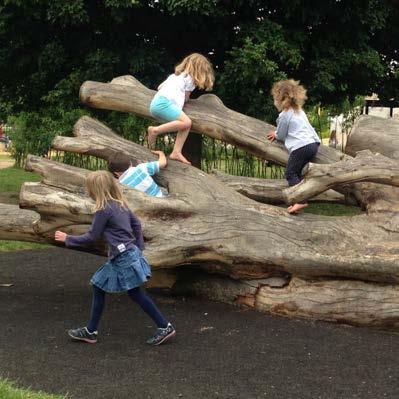


LOGS & STUMPS
Climbing & scrambling is almost as fun as finding out what lives underneath

GRASSES & STICKS
Swords & fairy wands do double duty as nesting materials for many animals
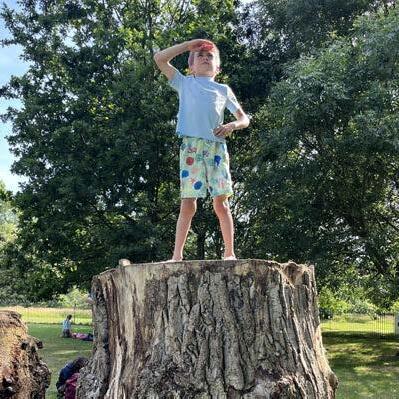

ANNA C. VERNA PLAYGROUND AT FDR PARK
RESILIENCE
Nature play helps build more resilient places and more resilient people. Rain gardens clean and store stormwater. Including native species increases biodiversity. Adding trees and shrubs reduces temperatures. Utilizing local logs and boulders for play is a sustainable choice with a lower carbon footprint.

STORMWATER
Rain gardens & swales manage stormwater while inviting discovery & exploration

TEMPERATURE
Trees & planting can lower temperatures up to 10°F, encouraging longer play times


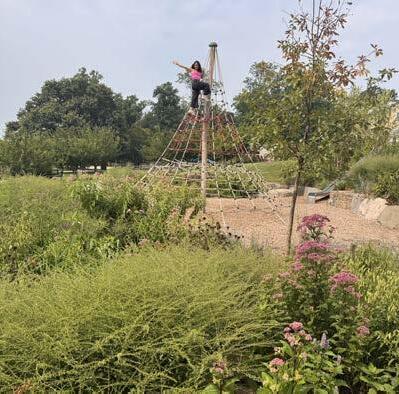
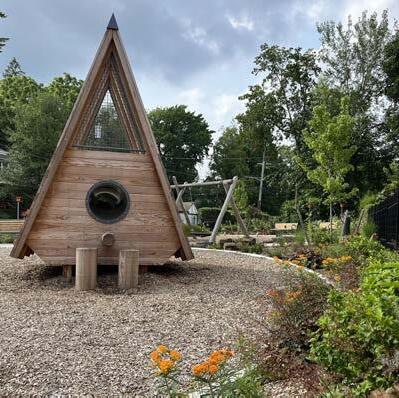
NATIVES
Using local plants increases biodiversity & encourages joyful interactions with wildlife

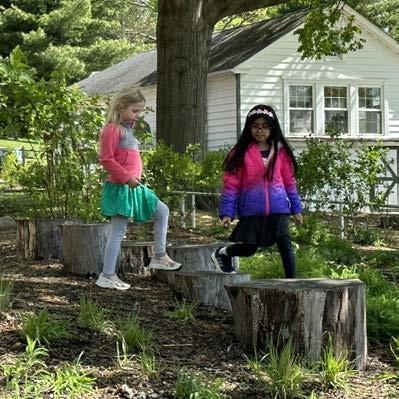
LIFE CYCLE
Wood materials & recycled steel & plastics are more eco-friendly choices for play
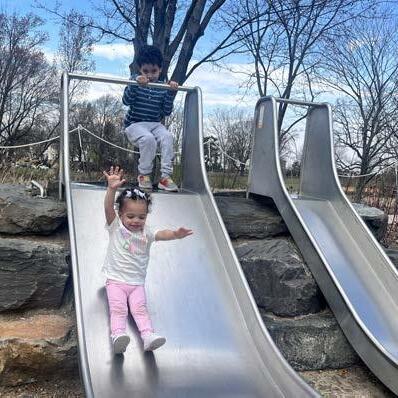

LOW CARBON
Sourcing materials locally & minimizing manufacturing lowers carbon footprint
LOCAL MATERIALS
Native rocks & logs can be scrambles, perches, & climbers, with a lower environmental impact
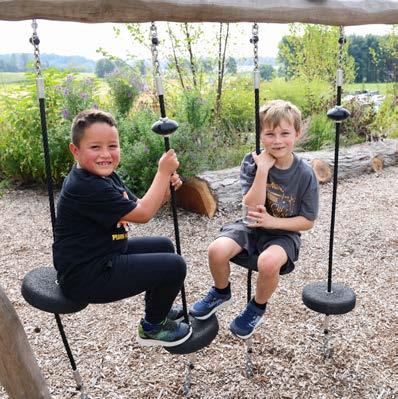
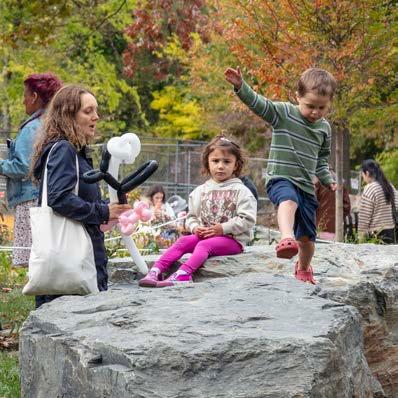

ANNA C. VERNA PLAYGROUND AT FDR PARK
CONNECTION
Playing in nature ignites curiosity and fosters a connection with the world around us. Learning, growing, and exploring in outdoor nature-based play helps us to become physically healthier, mentally stronger, and more emotionally balanced.
LEARNING
Nature play spaces spark learning through immersive sensory experiences


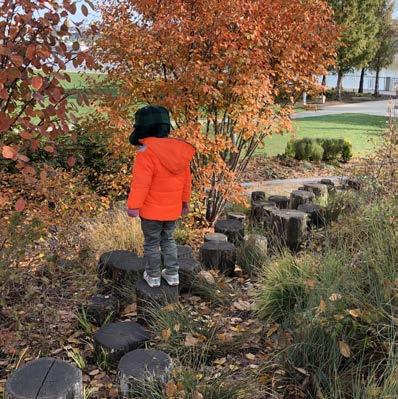
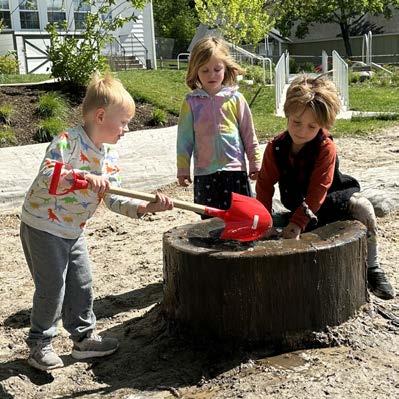
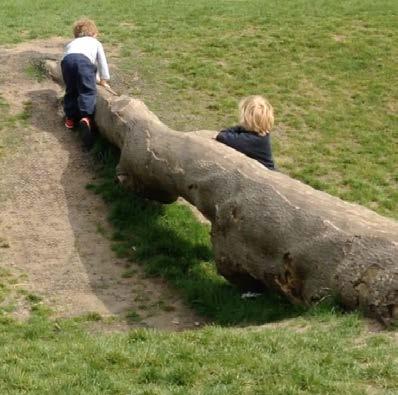
CURIOSITY
Novel environments light up the senses & encourage curiosity & discovery
AGENCY
Loose parts like sand, gravel, wood chips, sticks, seeds, & pods inspire creativity


EMOTIONAL REGULATION
Natural spaces calm stress response & help children stabilize their emotions

SENSE OF BELONGING
Nature based play encourages life-long connection to the natural world

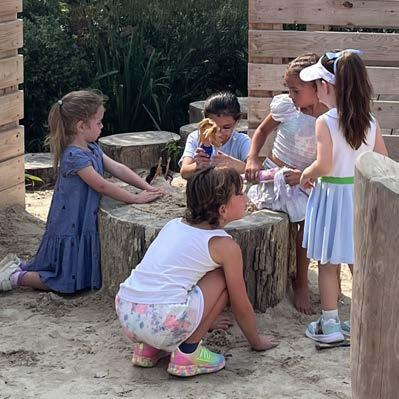

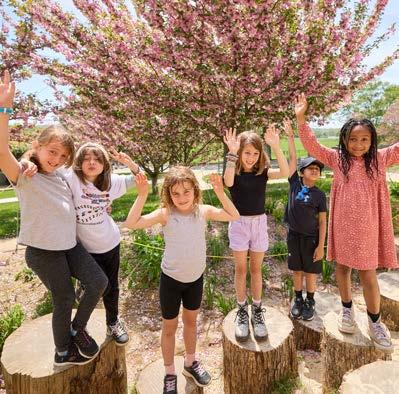
Happy childhoods spent in nature create the environmental stewards of tomorrow

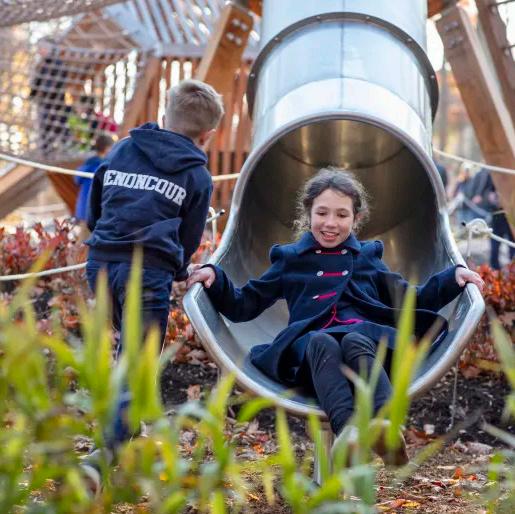
IMAGES
COVER
Photo Credit: Studio Ludo
PAGE 2
Westtown School Playscape, West Chester, PA, Photo Credit: Studio Ludo
PAGE 5
Hoboken ResilienCity Park, Hoboken NJ, Photo Credit: OLIN
PAGE 6
Moorestown Friends School, Moorestown NJ, Photo Credit: Peter Chollick
PAGE 9
Top Center - Moorestown Friends School, Moorestown NJ, Photo Credit: Peter Chollick
Top Right – Hoboken ResilienCity Park, Hoboken NJ, Photo Credit: Photo Credit: The Jersey Journal
Center Left – Anna C Verna Playground at FDR Park, Philadelphia PA, Photo Credit: Sahar Coston-Hardy
Center – Anna C Verna Playground at FDR Park, Philadelphia PA, Photo Credit: Sahar Coston-Hardy
Lower Left – Westtown School Playscape, West Chester, PA, Photo Credit: Studio Ludo
Lower Right – Moorestown Friends School, Moorestown NJ, Photo Credit: Peter Chollick
PAGE 10
Top Left – McKinley Park Tot Lot, Lansdowne PA, Photo Credit: Studio Ludo
Top Right – Spa Fields Park, London, UK, Photo Credit: Studio Ludo
Center – Hoboken ResilienCity Park, Hoboken NJ, Photo Credit: Caroline Gutman/ICN
Center Right – Westtown School Playscape, West Chester, PA, Photo Credit: Studio Ludo
Lower Left – Hoboken ResilienCity Park, Hoboken NJ, Photo Credit: Photo Credit: The Jersey Journal
Lower Center – Hayes Valley Playground, San Francisco, CA, Photo Credit: The Trust for Public Land
PAGE 11
Westtown School Playscape, West Chester, PA, Photo Credit: Studio Ludo
PAGE 13
Top Left – Moorestown Friends School, Moorestown NJ, Photo Credit: Peter Chollick
Top Center - Moorestown Friends School, Moorestown NJ, Photo Credit: Peter Chollick
Center – Tumbling Bay Playground, London, UK, Photo Credit: Studio Ludo
Center Right – Clissold Park, London, UK, Photo Credit: Studio Ludo
Lower Left – Tumbling Bay Playground, London, UK, Photo Credit: Studio Ludo
Lower Right –Tumbling Bay Playground, London, UK, Photo Credit: Studio Ludo
PAGE 14
Top Center – Philadelphia, PA, Photo Credit: Studio Ludo
Top Right – Moorestown Friends School, Moorestown NJ, Photo Credit:: Moorestown Friends School
Center Left - Clark Park, Philadelphia, PA, Photo Credit: Studio Ludo
Center – Moorestown Friends School, Moorestown NJ, Photo Credit: Peter Chollick
Lower Left – Marylebone Green Playground, London, UK, Photo Credit: Studio Ludo
Lower Right – Diana, Princess of Wales Memorial Fountain, Hyde Park, London, UK, Photo Credit: Studio Ludo
IMAGES
PAGE 15
Anna C Verna Playground at FDR Park, Philadelphia PA, Photo Credit: Sahar Coston-Hardy
PAGE 17
Top Left – Tumbling Bay Playground, London, UK, Photo Credit: Studio Ludo
Top Right – Moorestown Friends School, Moorestown NJ, Photo Credit: Peter Chollick
Center – Moorestown Friends School, Moorestown NJ, Photo Credit: Studio Ludo
Center Right – Anna C Verna Playground at FDR Park, Philadelphia PA, Photo Credit: Sahar Coston-Hardy
Lower Left – Westtown Friends School, West Chester PA, Photo Credit: Studio Ludo
Lower Center – McKinley Park Tot Lot, Lansdowne PA, Photo Credit: Studio Ludo
PAGE 18
Top Left – Hoboken ResilienCity Park, Hoboken NJ, Photo Credit: The Jersey Journal
Top Center – Moorestown Friends School, Moorestown NJ, Photo Credit: Peter Chollick
Center – Anna C Verna Playground at FDR Park, Philadelphia PA, Photo Credit: Studio Ludo
Center Right – Westtown Friends School, West Chester PA, Photo Credit: Westtown School
Lower Left – Bay Area Discovery Museum, Sausalito, CA Photo Credit: Studio Ludo
Lower Right – Anna C Verna Playground at FDR Park, Philadelphia PA, Photo Credit: Sahar Coston-Hardy
PAGE 19
Anna C Verna Playground at FDR Park, Philadelphia PA, Photo Credit: Sahar Coston-Hardy
PAGE 21
Top Center – Pier Six at Brooklyn Bridge Park, New York, NY, Photo Credit: Studio Ludo
Top Right – Kew Gardens, London, UK, Photo Credit: Studio Ludo
Center Left – Smale Riverfront Adventure Park, Cincinnati, OH, Photo Credit: Studio Ludo
Center – Burgess Park, London, UK, Photo Credit: Studio Ludo
Lower Left – Moorestown Friends School, Moorestown NJ, Photo Credit: Peter Chollick
Lower Right – Levy Park Playground, Houston, TX, Photo Credit: Studio Ludo
PAGE 22
Top Left – Moorestown Friends School, Moorestown NJ, Photo Credit: Peter Chollick
Top Right – Hoboken ResilienCity Park, Hoboken NJ, Photo Credit: The Jersey Journal
Center – Tumbling Bay Playground at Queen Elizabeth Olympic Park, London, UK, Photo Credit: Studio Ludo
Center Right – Westtown Friends School, West Chester PA, Photo Credit: Studio Ludo
Lower Left – Welles Park Nature Play Space, Chicago, IL, Photo Credit: Studio Ludo
Lower Center – Westtown Friends School, West Chester PA, Photo Credit: Westtown School
PAGE 23
Moorestown Friends School, Moorestown NJ, Photo Credit: Peter Chollick
PAGE 24
Brodnik Outdoor Learning Environment at Benchmark School, Media, PA Photo Credit: Sahar Coston-Hardy
PAGE 27
Moorestown Friends School, Moorestown NJ, Photo Credit: Peter Chollick
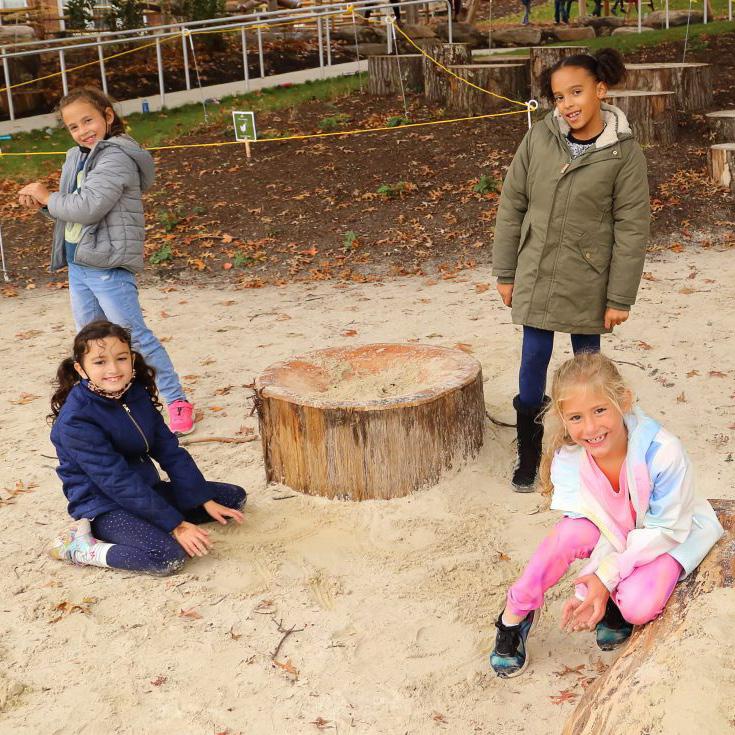
RESOURCES
London Study of Playgrounds: The Influence of Design on Play Behavior in London vs New York, San Francisco, and Los Angeles, ISSUU, 2017. Studio Ludo, Talarowski M.
National Study of Playgrounds: The Influence of Design on Use and Physical Activity, in 60 Playgrounds in 10 US Cities, ISSUU, 2022. Studio Ludo, Cohen D, Talarowski M, Han B, Williamson S, Galfond E, Young D, Eng S, McKenzie T.
Playground Design and Physical Activity, American Journal of Preventive Medicine, 2022. Cohen D, Talarowski M, Han B, Williamson S, Galfond E, Young D, Eng S, McKenzie T.
Innovative Playgrounds: Use, Physical Activity and Implications for Health, Public Health, 2019. Talarowski M, Cohen DA, Williamson S, Han B.
The First National Study of Neighborhood Parks: Implications for Physical Activity, American Journal of Preventive Medicine, 2016. Cohen D, Han B, Nagel C, Harnik P, McKenzie T, Evenson K, Marsh T, Williamson S, Vaughan C, Katta S.
Playground Design: Contribution to Duration of Stay and Implications for Physical Activity, Environmental Research and Public Health, 2023. Cohen D, Talarowski M, Han B, Williamson S, Galfond E, Young D, Eng S, McKenzie T.
Playground Locations and Patterns of Use, Journal of Urban Health, 2023. Young D, McKenzie T, Eng S, Talarowski M, Han B, Williamson S, Galfond E, Cohen D.
Balanced and Barefoot: How Unrestricted Outdoor Play Makes for Strong, Confident, and Capable Children, New Harbinger Publications, 2016. Hanscom, Angela J
Last Child in the Woods: Saving Our Children From Nature -Deficit Disorder, Alonquin Books, 2008. Louv, Richard.
Alter, Adam. “How Nature Resets Our Minds and Bodies.” The Atlantic, 29 Mar. 2013, www.theatlantic.com/health/ archive/2013/03/how-nature-resets-our-minds-and-bodies/274455/.
Alvarsson, Jesper J., et al. “Stress Recovery during Exposure to Nature Sound and Environmental Noise.” International Journal of Environmental Research and Public Health, vol. 7, no. 3, 11 Mar. 2010, pp. 1036–1046, https:// doi.org/10.3390/ijerph7031036.
SMELL LIKE DIRT.” YOU SHOULD “IN THE SPRING AT THE THE DAY END OF
MARGARET ATWOOD

